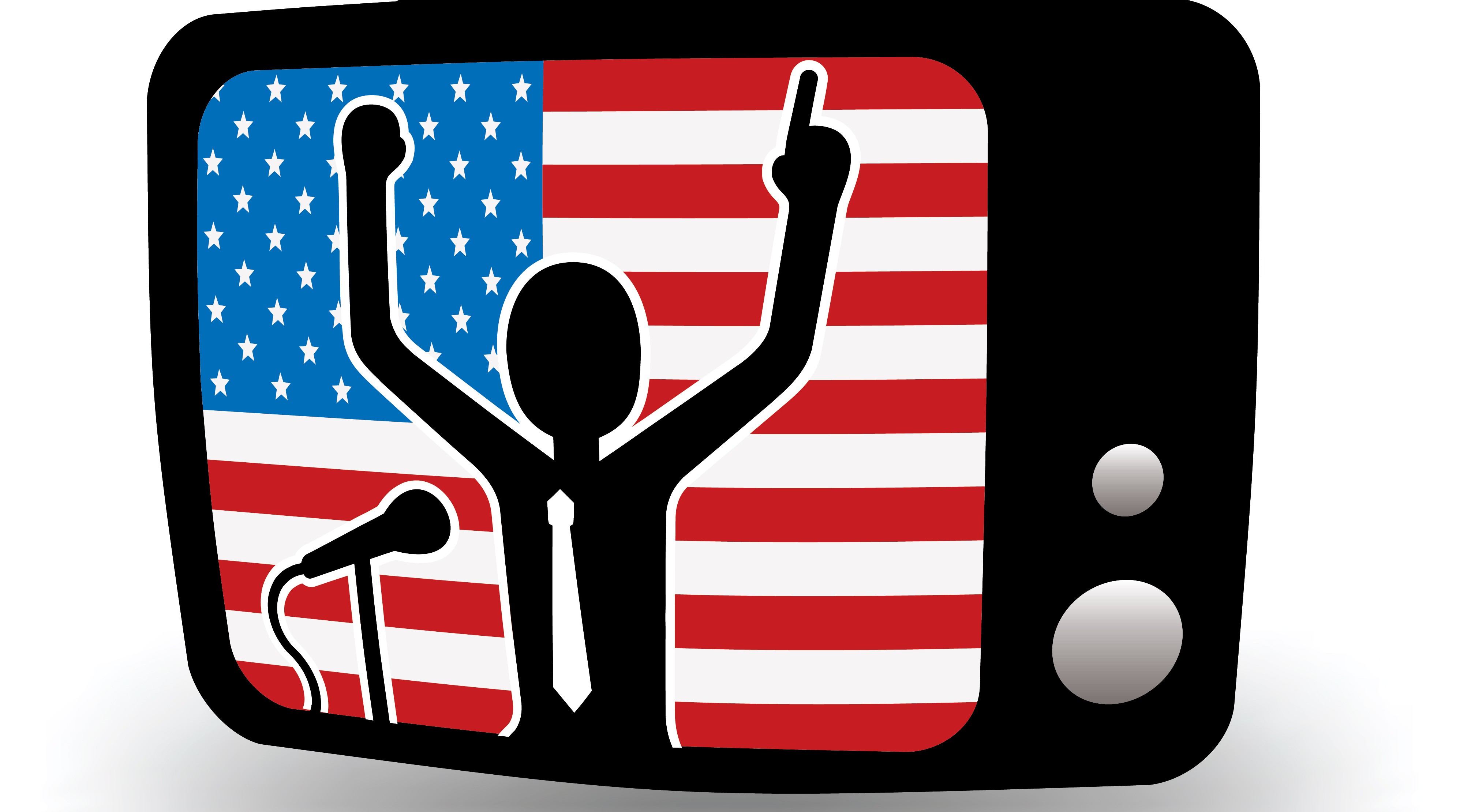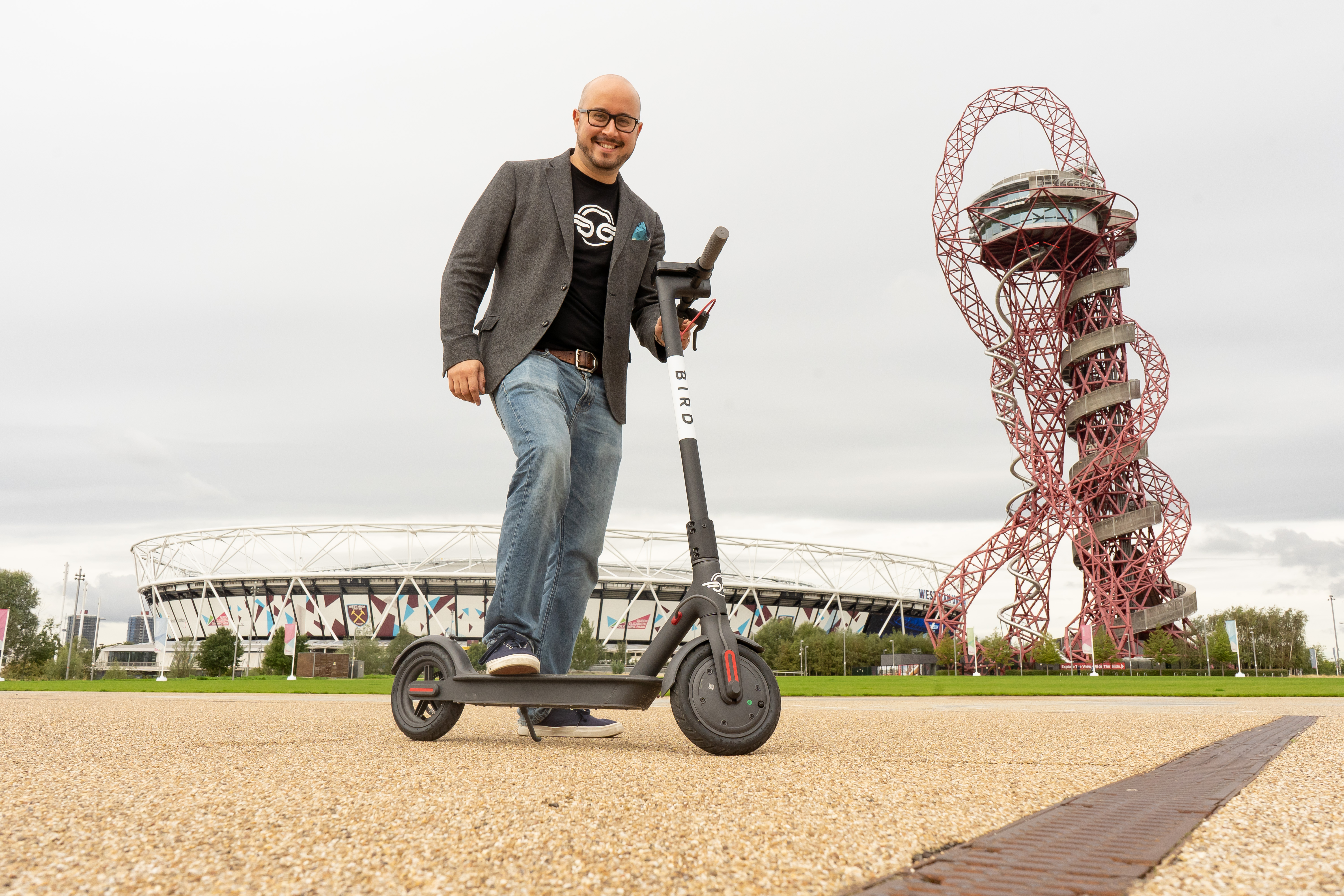Music
Trailers
DailyVideos
India
Pakistan
Afghanistan
Bangladesh
Srilanka
Nepal
Thailand
Iraq
Iran
Russia
Brazil
StockMarket
Business
CryptoCurrency
Technology
Startup
Trending Videos
Coupons
Football
Search
Download App in Playstore
Download App
Best Collections
Technology
The fact that Russian-linked bots penetrated social media to influence the 2016 U.S. presidential election has been well documented and the details of the deception are still trickling out.
In fact, on Oct. 17 Twitter disclosed that foreign interference dating back to 2016 involved 4,611 accounts — most affiliated with the Internet Research Agency, a Russian troll farm. There were more than 10 million suspicious tweets and more than 2 million GIFs, videos and Periscope broadcasts.
In this season of another landmark election — a recent poll showed that about 62 percent of Americans believe the 2018 midterm elections are the most important midterms in their lifetime & it is natural to wonder if the public and private sectors have learned any lessons from the 2016 fiasco. And about what is being done to better protect against this malfeasance by nation-state actors.
There is good news and bad news here. Letstart with the bad.
Two years after the 2016 election, social media still sometimes looks like a reality show called &Propagandists Gone Wild.& Hardly a major geopolitical event takes place in the world without automated bots generating or amplifying content that exaggerates the prevalence of a particular point of view.

In mid-October, Twitter suspended hundreds of accounts that simultaneously tweeted and retweeted pro-Saudi Arabia talking points about the disappearance of journalist Jamal Khashoggi.
On Oct. 22, the Wall Street Journal reported that Russian bots helped inflame the controversy over NFL players kneeling during the national anthem. Researchers from Clemson University told the newspaper that 491 accounts affiliated with the Internet Research Agency posted more 12,000 tweets on the issue, with activity peaking soon after a Sept. 22, 2017 speech by President Trump in which he said team owners should fire players for taking a knee during the anthem.
The problem hasn&t persisted only in the United States. Two years after bots were blamed for helping sway the 2016 Brexit vote in Britain, Twitter bots supporting the anti-immigration Sweden Democrats increased significantly this spring and summer in the leadup to that countryelections.
These and other examples of continuing misinformation-by-bot are troubling, but itnot all doom and gloom. I see positive developments too.

Photo courtesy of Shutterstock/Nemanja Cosovic
First, awareness must be the first step in solving any problem, and cognizance of bot meddling has soared in the last two years amid all the disturbing headlines.
About two-thirds of Americans have heard of social media bots, and the vast majority of those people are worried bots are being used maliciously, according to a Pew Research Center survey of 4,500 U.S. adults conducted this summer. (Itconcerning, however, that much fewer of the respondents said they&re confident that can actually recognize when accounts are fake.)
Second, lawmakers are starting to take action. When California Gov. Jerry Brown on Sept. 28 signed legislation making it illegal as of July 1, 2019 to use bots & to try to influence voter opinion or for any other purpose — without divulging the sourceartificial nature, it followed anti-ticketing-bot laws nationally and in New York State as the first bot-fighting statutes in the United States.
While I support the increase in awareness and focused interest by legislators, I do feel the California law has some holes. The measure is difficult to enforce because itoften very hard to identify who is behind a bot network, the lawpenalties aren&t clear, and an individual state is inherently limited it what it can do to attack a national and global issue. However, the law is a good start and shows that governments are starting to take the problem seriously.
Third, the social media platforms — which have faced congressional scrutiny over their failure to address bot activity in 2016 & have become more aggressive in pinpointing and eliminating bad bots.
Itimportant to remember that while they have some responsibility, Twitter and Facebook are victims here too, taken for a ride by bad actors who have hijacked these commercial platforms for their own political and ideological agendas.
While it can be argued that Twitter and Facebook should have done more sooner to differentiate the human from the non-human fakes in its user rolls, it bears remembering that bots are a newly acknowledged cybersecurity challenge. The traditional paradigm of a security breach has been a hacker exploiting a software vulnerability. Bots don&t do that & they attack online business processes and thus are difficult to detect though customary vulnerability scanning methods.
I thought there was admirable transparency in TwitterOct. 17 blog accompanying its release of information about the extent of misinformation operations since 2016. &It is clear that information operations and coordinated inauthentic behavior will not cease,& the company said. &These types of tactics have been around for far longer than Twitter has existed — they will adapt and change as the geopolitical terrain evolves worldwide and as new technologies emerge.&
Which leads to the fourth reason I&m optimistic: technological advances.
In the earlier days of the internet, in the late ‘90s and early 00&s, networks were extremely susceptible to worms, viruses and other attacks because protective technology was in its early stages of development. Intrusions still happen, obviously, but security technology has grown much more sophisticated and many attacks occur due to human error rather than failure of the defense systems themselves.
Bot detection and mitigation technology keeps improving, and I think we&ll get to a state where it becomes as automatic and effective as email spam filters are today. Security capabilities that too often are siloed within networks will integrate more and more into holistic platforms better able to detect and ward off bot threats.
So while we should still worry about bots in 2018, and the world continues to wrap its arms around the problem, we&re seeing significant action that should bode well for the future.
The health of democracy and companies& ability to conduct business online may depend on it.
- Details
- Category: Technology
Read more: Bots Distorted the 2016 Election. Will the Midterms Be a Sequel
Write comment (90 Comments)Bracket Capital quietly emerged onto the scene in 2017 and has since invested in 23 technology startups, including the likes of Lyft, Bird, Airbnb and Coinbase. Today, the founders are coming out of stealth, ready to talk about whatgone on behind the scenes.
Bracket is led by Yalda Aoukar and Jihan Bowes-Little, co-founders and managing directors based in Doha, Qatar and Los Angeles, respectively. The two relative unknowns, in venture at least, have had successful careers at private equity groups and hedge funds, recently opting to steer their careers in different directions.
&Venture is one of the best performing asset classes of the last 35 years,& Aoukar told TechCrunch. &If we look at the economic cycle at the moment — investors are bracing for a downturn.&
&Venture, by its nature, is quite defensible as an asset class. Itthe best hedge that we can take vis-a-vis any market volatility or potential correction that the markets may be poised for.&
Bracket has invested $120 million since it began making deals in 2017, with more than $150 million under management. In addition to the aforementioned unicorns, the firm has also provided capital to Reddit, mental health startup Happy Not Perfect, on-demand self-storage startup Clutter and more. Like many in Silicon Valley these days, the firm is industry and stage-agnostic.
With a presence in the Middle East and Southern California, Bracket, which considers itself an investment manager rather than a VC firm, hopes to serve as a bridge between international capital and companies based in SoCal and Silicon Valley. The firm chose LA as its headquarters because of the hoards of talent available there and the lower cost of living that makes it a particularly exciting place to be a founder.
For Bracket, diversity is not a requirement or part of its thesis, but it has influenced their decisions and deal flow. Aoukar, a Lebanese-born woman in finance in the Middle East, and Bowes-Little, a biracial founder andpart-time a hip-hop artist known as Metis, see their unique backgrounds as an advantage.
&We don&t tend to look where other people are looking,& Bowes-Little told TechCrunch.
Aoukar began her career in London at Lehman Brothers, before landing at Barclays, Morgan Stanley and finally as a vice president at Investcorp. Bowes-Little started with Goldman Sachs and had stints at Millennium Capital, Bluecrest Capital and most recently as an executive director JP Morgan Chase.
&We aren&t ex-operators or engineers-turned-VCs, which is the success story of a lot of VC firms,& Bowes-Little said.
&Successful investors know what their strengths are and lean into them. The one common denominator amongst the truly great managers I&ve seen is to really know themselves and know what their strengths and weakness are.&
Bracket intends to play heavily to its strength: multi-asset investingwith a global lens.
- Details
- Category: Technology
Read more: One-year-old Bracket Capital is already an investor in Lyft, Bird, Airbnb and Coinbase
Write comment (94 Comments)Transit, a company that built a mobile app designed to help people in cities live without cars, has raised $17.5 million from two automakers in a Series B round.
The round wasled by RenaultNissan-Mitsubishijoint investment arm Alliance Ventures.InMotion Ventures, Jaguar Land Rover venture capital fund, also joined the round, as well as two past investors, Accel and Real Ventures.
RenaultNissan-Mitsubishi and Jaguar Land Roverinvestment would have seemed counterintuitive five years ago. But this is 2018. Itthe year of the scooter wars and micro-mobility; italso a time of transition for automakers that are looking to diversify their traditional business of building and selling cars.
Founded in 2012, Transit started as an app to help people check departure times for buses and trains. Itgrown into a mobile app platform that enables multi-modal transportation, integrating public transit, ride hailing, bike sharing and scooter sharing. The mobile app, which providesreal-time datafrom transit agencies with user crowdsourcing, gives users notifications from their ride. The appthen tracks the real-time location of the vehicle and notifies the user when to leave for their stop, when to disembark. and sends adjusted ETAs. Transit is nowused by transit agencies, including BostonMBTA, BaltimoreMDOT MTA, Silicon ValleyVTA, Tampa BayPSTA and MontrealSTM.
The company wants to be transit and company agnostic, so, ita big proponent of open APIs. Montreal, where the company is based, is a model of what Transit wants to be everywhere. In Montreal, people can use the app for car sharing, bike sharing, to order an Uber or use public transit, COO Jake Sion explained.
Transit, which operates in 175 cities globally, will use the injection of capital to scale operations and improve the platform by integrating various services and payment methods on the app.
&This investment, which will advance Transitefforts to make mobility seamless and accessible in cities, fits with the Alliance 2022 strategy to become a leader in robo-vehicle ride-hailing mobility services and a provider of vehicles for public transit use and car-sharing,&François Dossa, Alliance Global vice president of ventures and open innovation, said in a statement.
- Details
- Category: Technology
Read more: Automakers invest in Transit, the app that helps people get around without a car
Write comment (97 Comments)Streaming music service Pandora released its third quarter earnings today & the first since the news of its impending acquisition by SiriusXM, announced in September. The company reported a quickly growing subscription business for its paid products, Pandora Plus and Pandora Premium, which brought in $125.8 million in Q3 & a figure thatup 49 percent year-over-year.
However, Pandoralarger user base consists of those on its ad-supported free tier, whose revenues are not growing as quickly. The company pulled in $291.9 million in ad revenue, it said. Thatonly up 6 percent year-over-year & despite the fact that Pandoraacquisition of digital audio ad technology company AdsWizz completed in May and contributed to Pandoraad revenue this quarter.
Pandora also said the launch of new ad formats and a shift to higher CPM ad products aided in the ad revenue growth & modest it may be.
For the quarter, Pandora reported $417.6 million in total revenue for the quarter, a 16 percent year-over-year increase (excluding Australia, New Zealand and Ticketfly, and including AdsWizz). This beat the consensus estimate of $401.29 million.
Its non-GAAP net loss was $15.5 million, or $0.06 per share. This compared to $15.9 million net loss or $0.06 in the year-ago quarter. It beat analysts estimates of ($0.11) on this front.
In terms of listeners, Pandora added784,000 subscribers in Q3, reaching approximately 6.8 million total subscribers for its paid products.
Thatstill far, far smaller than rivals Apple Music and Spotify & the latter which also reported earnings this month, claiming 87 million premium customers versus Apple Music50 million. By comparison, Pandorapaying customer base is tiny, but its overall user base is not.
Pandora said its active users reached 68.8 million by the end of Q3, with total listener hours of 4.81 billion.
It also touted the success of its Premium Access product, which allows customers to unlock on-demand music for a session by watching video ads. The company said over 32 million listeners used Premium Access to date. However, the high use of the product compared with the small size of its paid customer base makes one wonder if Pandora is missing an opportunity to lure in potential subscribers by giving them this easy way to avoid paying through these ad views.
Because the Pandora / SiriusXM deal is still pending & itset to close in Q1 2019 & the company didn&t host an earnings call.
However, it did again reiterate the potential benefits of such a deal, including the $7.0 billion in expected 2018 revenue as a result, co-marketing opportunities, and the addition of SiriusXMexclusive content to boost Pandoranon-music content business.
It also made note of the recent ad partnership deal with SoundCloud, which will increase PandoraU.S. ad audience reach to over 100 million.
&I&m proud of the progress we&ve made over the past year to reinvigorate Pandora,& said Roger Lynch, Pandora CEO, in a release. &A year ago, we committed to drive listener engagement through product innovation, expand our content, and increase distribution partnerships. We also prioritized making our ad tech capabilities a strategic advantage. And we executed. We launched new products like Premium Access, delivering on-demand functionality and improved listener engagement in our ad-supported tier; forged partnerships with leading brands such as T-Mobile, AT-T, Comcast, and Snap; and solidified our global leadership in digital audio advertising with the acquisition of AdsWizz and the launch of our programmatic audio marketplace.&
&Looking ahead, I couldn&t be more excited about Pandora joining forces with SiriusXM. A combined Pandora-SiriusXM will create the worldlargest audio entertainment company, bringing Pandora additional resources to accelerate growth and building on SiriusXMleadership in the car, subscription expertise, and unique content,& he added.
Pandorastock is up 2.3% in after hours trading.
- Details
- Category: Technology
Read more: Pandora beats in Q3 with $417.6M in revenue, fast-growing subscription business
Write comment (92 Comments)It was only a matter of time before the electric scooters infiltratedthe U.K.
Today, the well-fundedstartup Bird is launching a fleet of its shareable e-scooters in LondonQueen Elizabeth Olympic Park. As partof the pilot, the company is making the scooters available between 7 a.m. and 9 p.m. for anyone heading between Stratford and Here East, a co-working campus located in the middle of the park thatalso home to Bird London office. Herea map of the approved route:
 Londoners, or anyone whofollowed the scooter wars closely, are probably scratching their heads, because yes, e-scooters areillegal on British roads and sidewalks due to ancient English legislation.Under the Highway Act of 1835,the U.K.Department for Transport (DfT) has classified e-scooters as &powered transporters,& a type of vehicle only permitted for use on private property.
Londoners, or anyone whofollowed the scooter wars closely, are probably scratching their heads, because yes, e-scooters areillegal on British roads and sidewalks due to ancient English legislation.Under the Highway Act of 1835,the U.K.Department for Transport (DfT) has classified e-scooters as &powered transporters,& a type of vehicle only permitted for use on private property.
To its credit, Bird seems to have found a loophole. It will only operate the scooters on private land — Olympic Park — and if riders deviate from the route or onto public land, the GPS-tracked scooters will power down.
Santa Monica-based Bird has reportedly been sparring with the DfT since last year amid attempts to enter the London market.Itunclear how or if they&ll be able to launch in other parts of the city following this pilot or if the DfT is considering changes to its nearly 200-year-old law; we&ve reached out to Bird for further explanation.

Richard Corbett, the head of BirdU.K. office.
&One of the biggest issues modern cities face is increasing congestion and decreasing air quality,& said Richard Corbett, who was hired in May to oversee launch efforts in the U.K., Ireland and the Nordic countries. &Birdmission is to help solve these problems by getting people out of cars and onto environmentally friendly sharable electric scooters. We&re really excited to be launching the UKfirst electric scooter pilot & helping connect the Here East campus with Stratford. We really hope people will try Bird in the Olympic Park and see the advantages it brings.&
Earlier this year, Bird completed its first European launch in Paris, in what also marked its first foray outside the U.S. market. The company has since released scooters in Brussels, Vienna, Zurich and Tel Aviv, operating in more than 100 cities total.
In September, Bird announced that it had clocked in 10 million scooter rides since launching roughly a year prior. Valued at $2 billion, the company has raised over $415 million in venture capital funding from Accel, Greycroft, CRV, Index Ventures, Upfront Ventures, Sequoia, Sound Ventures, Craft Ventures and others.
Bird was founded in 2017 by former Uber vice president of global driver growth Travis VanderZanden .
- Details
- Category: Technology
Read more: You can ride Bird’s e-scooters in London starting today — but only in Olympic Park
Write comment (99 Comments)AMC Theatres is raising the price of its subscription movie plan Stubs A-List — at least in a handful of states.
Rather than simply charging $19.95 per month across-the-board, AMC will soon offer differing prices to residents of different states. California, Connecticut, Massachusetts, New Jersey and New York will see the biggest increase, to $23.95 per month. Meanwhile, the cost will increase to $21.95 per month in Colorado, Delaware, Florida, Georgia, Illinois, Maryland, Minnesota, Pennsylvania, Virginia and Washington, plus Washington, D.C.
The price is supposed to stay the same every where. The increase will take effect on January 9, 2019, and AMC says that if you sign up before then, your price will hold for 12 months.
Stubs A-List launched in late July, and in September the company said it had already attracted 380,000 subscribers. Now, after 4.5 months, the number is up to 500,000.
Of course, AMC launched the service after MoviePass helped to popularize the subscription movie ticket model — but since then, MoviePass has limited users toa rotating lineup of movies, something that competitors have taken advantage of.(Stubs A-List allows subscribers to purchase up to three tickets per week for any movie in any format in any AMC theater.)
&Our decision to keep the AMC Stubs A-List monthly price unchanged in 35 states, along with only a modest price adjustment in some key markets going in place in early 2019 will keep us in that sweet spot of successfully balancing profits and popularity,& said AMC Theatres CEO Adam Aron in a statement.
- Details
- Category: Technology
Read more: AMC is raising Stubs A-List prices in 15 states
Write comment (94 Comments)Page 3744 of 5614

 10
10





